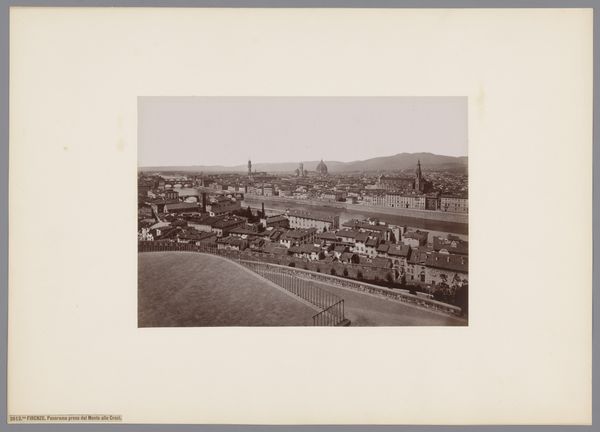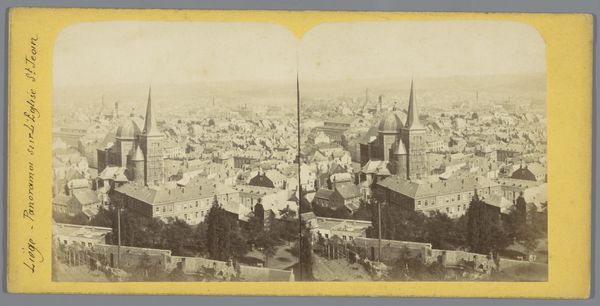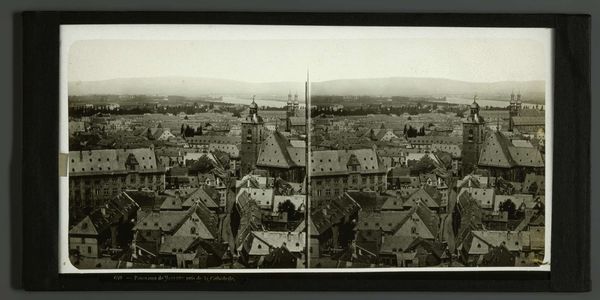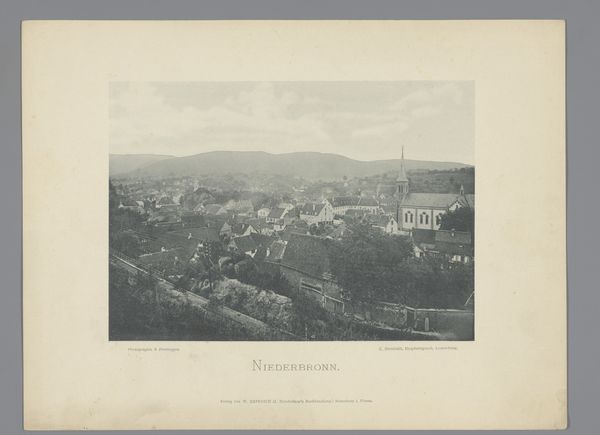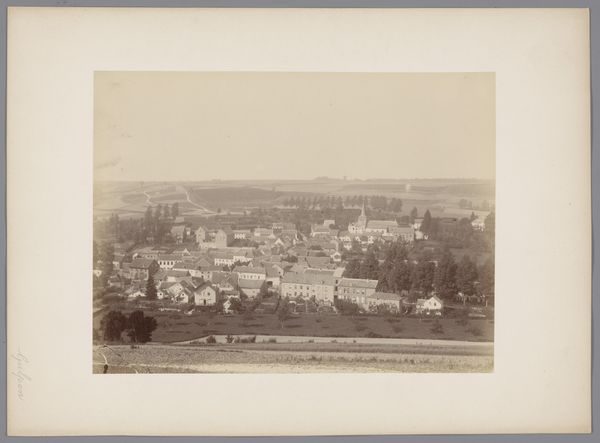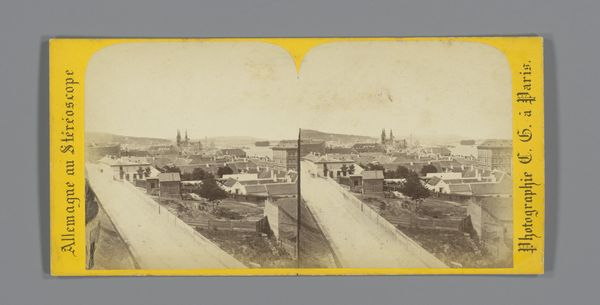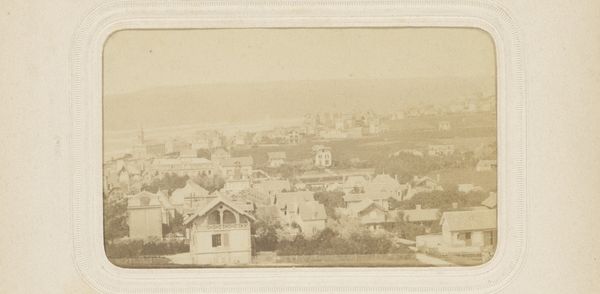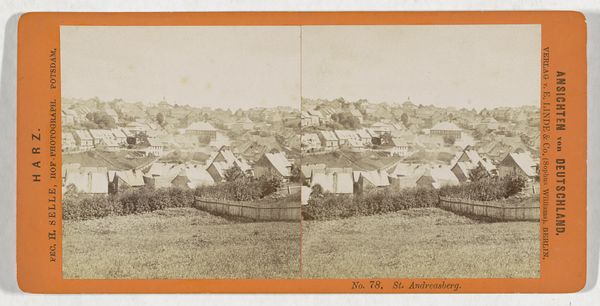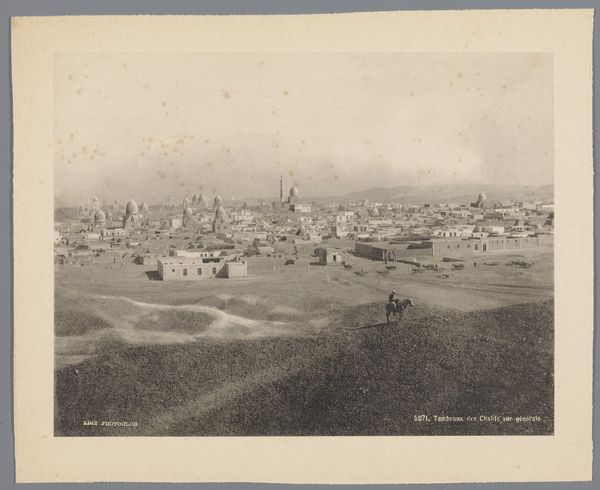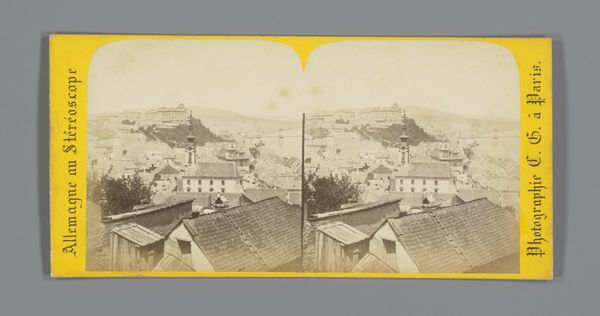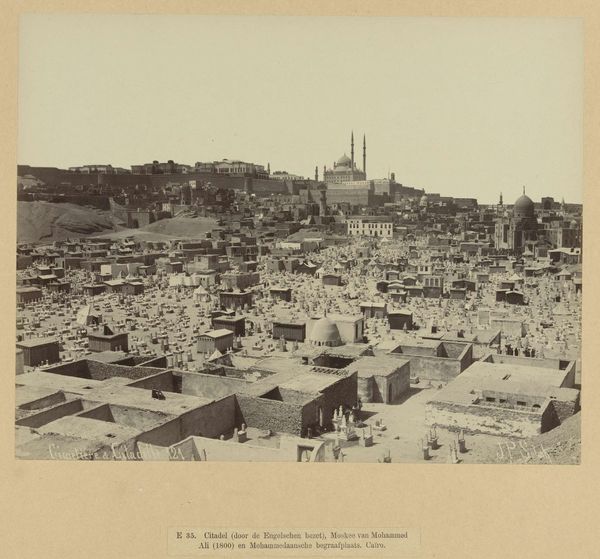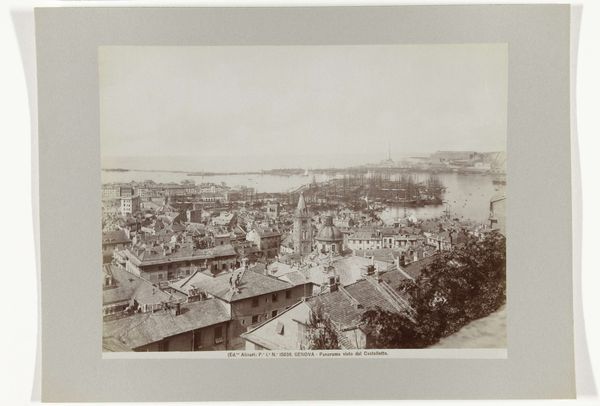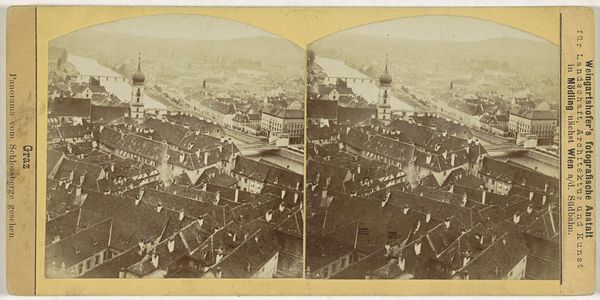
photography
#
pictorialism
#
landscape
#
photography
#
19th century
#
cityscape
Dimensions: height 82 mm, width 51 mm
Copyright: Rijks Museum: Open Domain
Curator: This photographic print titled "Stadsgezicht, vermoedelijk in Duitsland," meaning Cityscape, probably in Germany, dates from around 1860 to 1900. It is by G. Koczyk. Editor: There’s something immediately serene about this image. The sepia tones lend a feeling of aged reflection. Curator: The use of photography during this time reflects the societal fascination with capturing and preserving moments. Consider its public role in shaping national identity. Photography granted a certain permanence. Editor: Absolutely, the pictorialism at play softens the scene, almost romanticizes it, imbuing the cityscape with nostalgia. The buildings’ clustered roofs create this sense of intimacy with older European cities, evoking the era of the Industrial Revolution. Curator: Pictorialism certainly elevated photography towards art. The scene could evoke cultural continuity and memory because many European cities feature similar designs of architecture clustered along rivers. What would people make of this city, or of the era? Editor: Possibly about progress and tradition coexisting. The old architectural designs speak to enduring values and history. This coexistence echoes societal anxieties and aspirations inherent within modernity. Curator: That idea mirrors how society in general navigated such profound shifts. As a cultural document, its monochrome hues render everything both ordinary, but somehow timeless, set adrift in the currents of cultural history. Editor: For me, the emotional weight lies in how beautifully this anonymous city, likely German, conveys its quiet endurance, and that comes across through this captured image. Curator: This photograph is not merely a record of buildings. Instead, it evokes the period and a lasting cultural memory, rendered still with artistic vision, using photography. Editor: Exactly! Its timeless aesthetic, suspended somewhere between pictorial idealism and urban documentation, is striking to consider through today's lens.
Comments
No comments
Be the first to comment and join the conversation on the ultimate creative platform.
